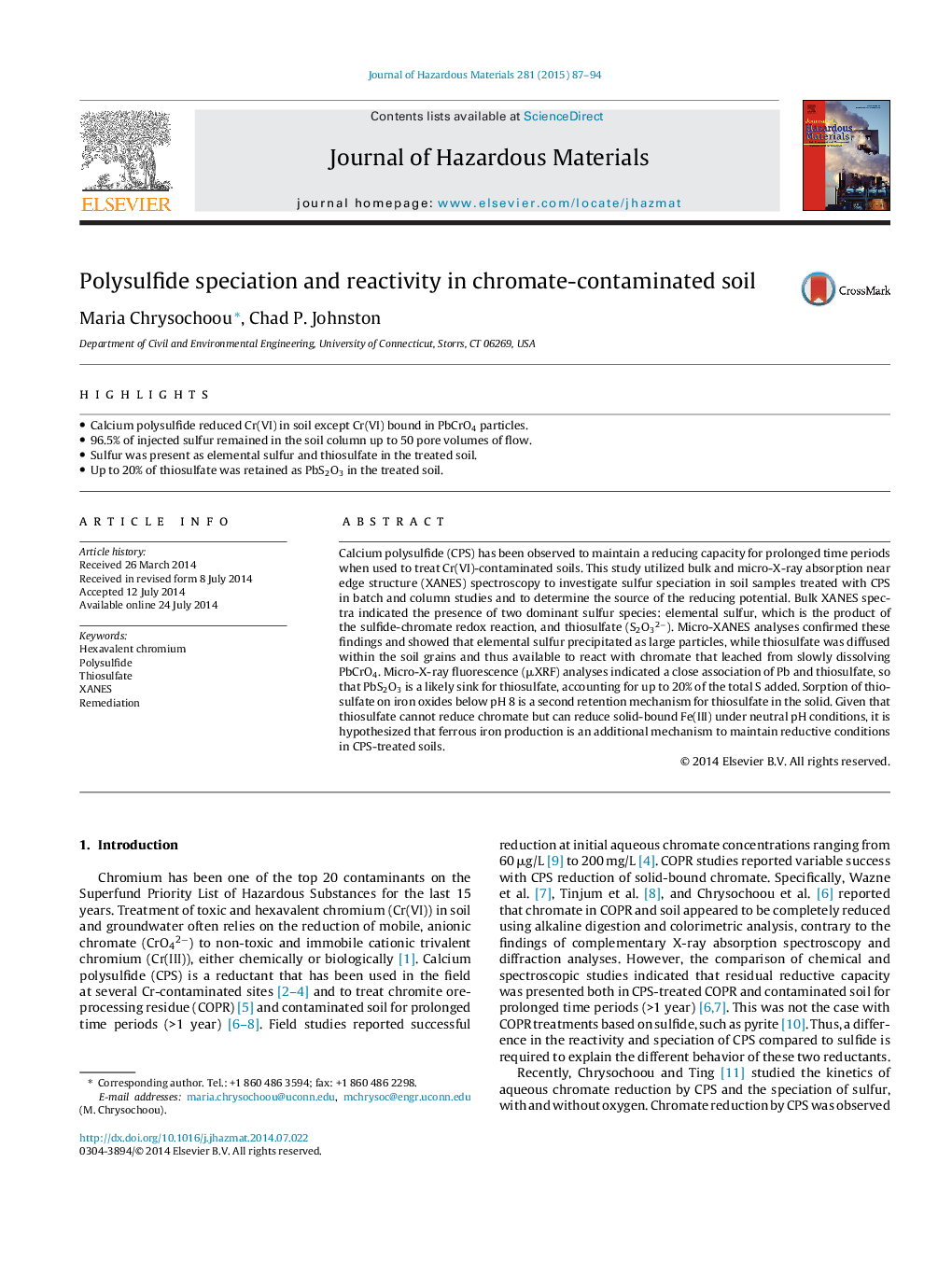| Article ID | Journal | Published Year | Pages | File Type |
|---|---|---|---|---|
| 576400 | Journal of Hazardous Materials | 2015 | 8 Pages |
Abstract
Calcium polysulfide (CPS) has been observed to maintain a reducing capacity for prolonged time periods when used to treat Cr(VI)-contaminated soils. This study utilized bulk and micro-X-ray absorption near edge structure (XANES) spectroscopy to investigate sulfur speciation in soil samples treated with CPS in batch and column studies and to determine the source of the reducing potential. Bulk XANES spectra indicated the presence of two dominant sulfur species: elemental sulfur, which is the product of the sulfide-chromate redox reaction, and thiosulfate (S2O32â). Micro-XANES analyses confirmed these findings and showed that elemental sulfur precipitated as large particles, while thiosulfate was diffused within the soil grains and thus available to react with chromate that leached from slowly dissolving PbCrO4. Micro-X-ray fluorescence (μXRF) analyses indicated a close association of Pb and thiosulfate, so that PbS2O3 is a likely sink for thiosulfate, accounting for up to 20% of the total S added. Sorption of thiosulfate on iron oxides below pH 8 is a second retention mechanism for thiosulfate in the solid. Given that thiosulfate cannot reduce chromate but can reduce solid-bound Fe(III) under neutral pH conditions, it is hypothesized that ferrous iron production is an additional mechanism to maintain reductive conditions in CPS-treated soils.
Related Topics
Physical Sciences and Engineering
Chemical Engineering
Chemical Health and Safety
Authors
Maria Chrysochoou, Chad P. Johnston,
